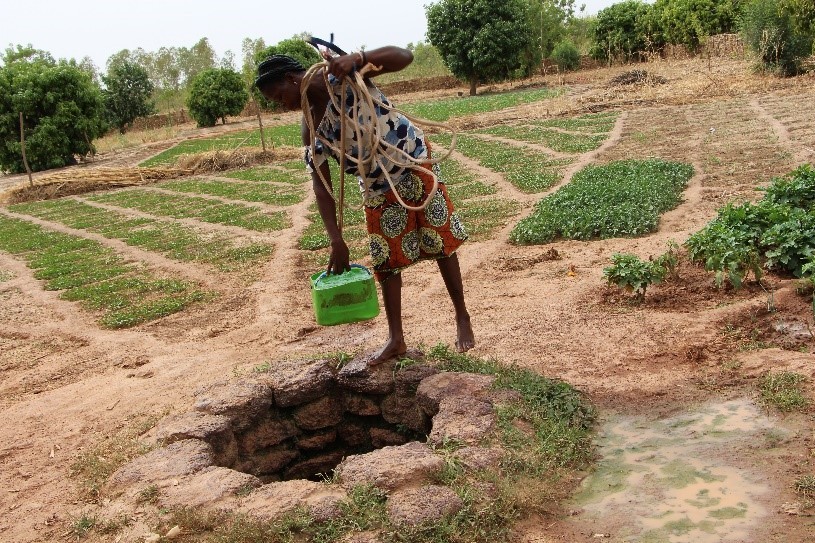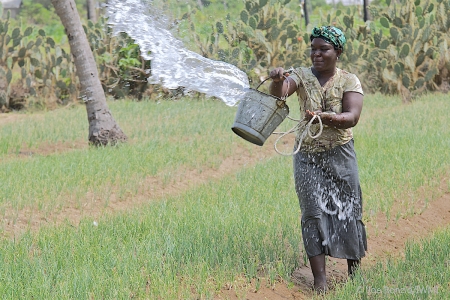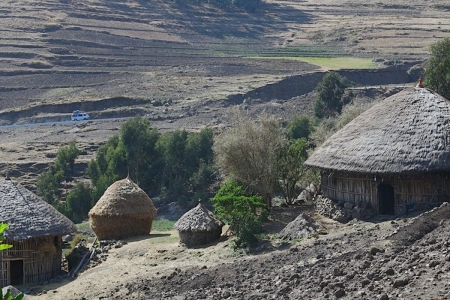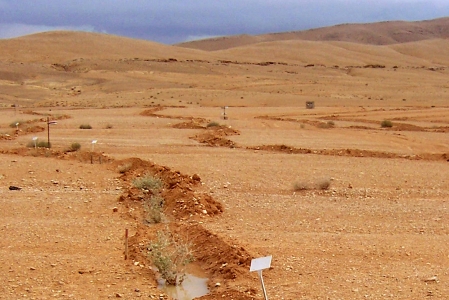Women’s use and management of the agricultural land around them is, among many things, affected by access to water for irrigation.
The Invest in Water Project of the Volta-Niger Focal Region assesses the effectiveness and adaptability of potential agriculture water management solutions. Gender focused analysis is a central element of the project in order to ensure that identified solutions are appropriate to both men and women and their considerations are taken into account.

As part of the project, we visited six communities (Kamega, Binaba-II, Winkogo, Pusu-Namongo, Navrongo-Saboro and Paga-Kajelo) distributed across the three districts in the upper East region of Ghana. Through a series of field visits, focus group discussions, and interviews, we spoke with local community members, male and female, young and old, about multi-purpose small reservoirs in the area. Here are three interesting lessons that we learned.
“Men and women have equal access to the water in the reservoir in our community”, stated women in a focus group discussion held at Paga-Kajelo community, Upper East Region of Ghana.
Lesson 1: Small reservoirs appear to meet women’s needs.
Female farmers face challenges in accessing water for irrigation in large-scale irrigation schemes as they are often biased towards the needs of men. In addition, some water storage infrastructures, such as wells, require heavy labour to lift water unless one can afford motorized pumps. Both limit women’s access to water infrastructure.
In Ghana, the community surveys revealed that small reservoirs were more accessible to women for small-scale irrigation and livestock watering. Our field study looked at two types of small reservoirs: one with built-in canal infrastructure and the other without canals. Those with built-in canals allowed for water to go to individual fields/plots using gravity, requiring significantly less physical labour. In the surveys, women explicitly indicated that small reservoirs with built-in canals increase their capability to access and use water.
When asked about participation in the management of small reservoirs, women in all communities surveyed claim that they were involved in the decision-making for reservoir management, as well as water and land allocation. According to women participants, women members comprise of 20% to 50% of reservoir management committees in various communities.
Lesson 2: Access to land is not a constraint to small-scale irrigation by women.
In general, we found that access to land is not a constraint to women’s participation in small-scale irrigated farming. Regardless of gender, irrigable land was fairly evenly distributed amongst farmers in the communities visited.
For instance, in the Paga-Kajelo community, we found that generally women have more access to land than young men in the community. These young men told us that, “land owners prefer to give their lands to women for cultivation rather than to [us]”, because, “some landowners believe that women are more productive than [us]”. There is a general consensus among the community that women cultivate vegetables for consumption at home and as far as small-scale farming is concerned, women are more efficient and better field managers than men.
In the same community, a separate focus group discussion with 9 women confirmed this trend. In some communities, men give smaller farm plots to their wives where women grow vegetables for domestic consumption, as well as market sale.
This didn’t necessarily hold true across communities. In Kamenga community, people who provided labour services during the construction of the reservoir were allocated 1/8th of an acre of land for irrigated agriculture regardless of gender.
In Binaba-II community, women may get land through allocation or plots from their husbands. Wives may also inherit irrigable lands from deceased husbands, or rent if they can afford it.
Lesson 3: Men have better access to financial resources than women.
All the communities surveyed explicitly indicated that financial constraints are a critical issue and are common to both men and women. However, in some communities, women’s groups told us that men have relatively better access to credit than they do. This allowed the men better access to fertilizer, pesticides, and improved seeds.
A number of factors were identified:
- Men, through tradition and cultural rights, have more collateral, such as land and livestock which gives them better chances at getting loans
- Some lenders require the approval of husbands for loan applications by women
- The loan terms and conditions were too rigid to suit women’s needs, e.g., bank’s requirement for collateral and business planning
- Knowledge among women about credit union operations, cooperative principles remains limited and illiteracy levels impede the ability to complete paperwork
Similar factors were identified in an International Fund for Agricultural Development study: Rural Women have difficulty gaining access to credit
Though the results are not conclusive we found that if women are provided access to land and water they can produce a range of agriculture products that directly improve their families’ livelihoods. Two entry points to amplify and strengthen this system would be to improve access to financial resources and agriculture inputs (seeds, pesticides and fertilizers). Understanding the extent of impacts of these agriculture systems on family livelihoods and the specific constraints to accessing inputs will be an important future research topic.















